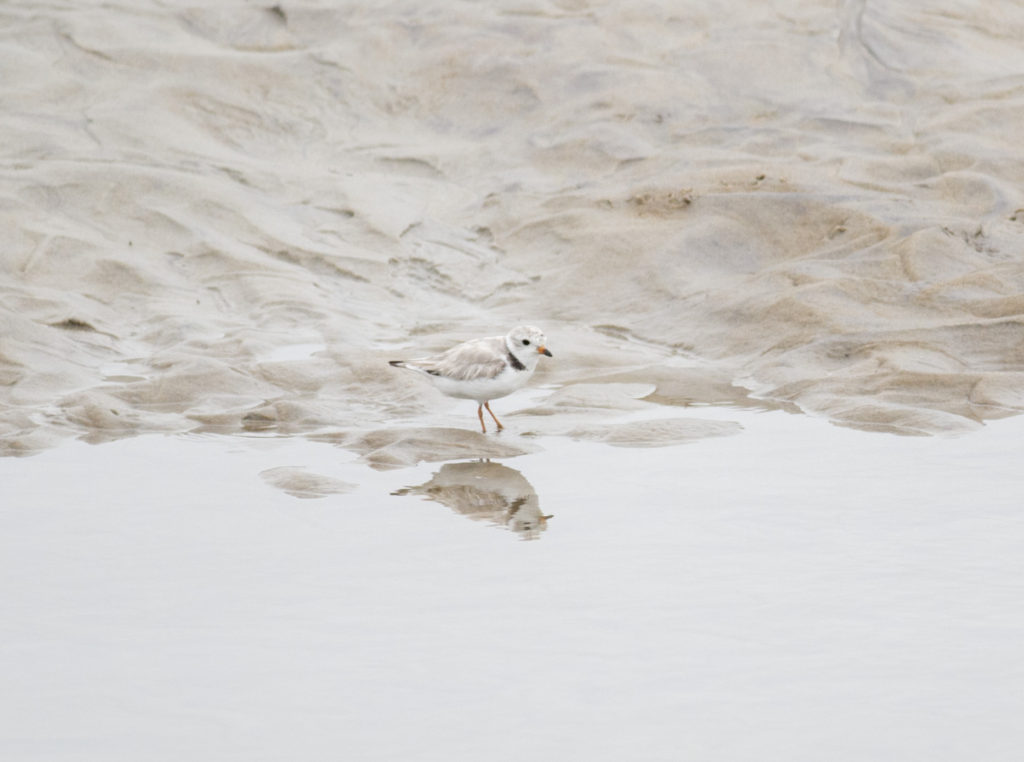As a member of Birds Korea, a design student, and a bird and conservation enthusiast, I was absolutely thrilled to work for one of the oldest and most active bird conservation organizations in North America—Massachusetts Audubon Society (Mass Audubon). This past summer, I worked for Mass Audubon’s Coastal Waterbird Program (CWP)—a team of dedicated individuals collaboratively working towards the “recovery and protection of decimated and vulnerable beach-nesting shorebirds” along the Massachusetts coastline (Dr. Katharine Parsons, Mass Audubon CWP). Staffs monitor, educate, and conduct various research projects throughout the region, and I was assigned to assist in monitoring at the North Shore—specifically in the Plum Island area—as well as a few sites in the Boston Harbor region.

In addition to regular monitoring of protected species like Piping Plover, Common Tern and American Oystercatcher, I was entrusted with one of the pilot studies CWP has started to specifically investigate Least Terns and their use of the habitats that we monitor. For this study, I was working on collecting geospatial data relevant to the research and production of Geographic Information System (GIS) maps that can be utilized in assessments of land-use by birds. Real and applicable experience in this powerful tool will surely become more and more useful for my career, as I hope to develop this skill further. It was also truly remarkable to spend long hours on the beach closely observing these beautiful creatures, even though the conditions were not the most favorable at times with crowds of beachgoers, sultry summer sun, unpredictable showers, and inevitable and unpleasant droppings from the very subject that I was observing. Retrospectively, I believe that even those attributes of the job added to the charm of this incredibly engaging task.

I was also in charge of designing informational flyer for campers and visitors of the Boston Harbor Islands, where coexistence between people and birds is so important to achieve. Recreational opportunities for human and habitable conditions for birds were equally valuable on these islands within an urban context, and thus we hope to better inform the people of this core value. The flyer is still an ongoing project, in which I am certain various stakeholders will input for further improvements.


Ten glorious and golden summer weeks have gone by, but they were very well spent with this absolutely rewarding internship with the CWP team. I hope to carry on with some of these unfinished projects and perhaps even more exciting new ones in the future. I thank everyone at the Mass Audubon CWP with whom I was fortunate enough to work with during this great season, and am absolutely aware that this was only possible due to their openness to my participation and guidance throughout.
Now that I can reflect upon this experience in comparison with my knowledge of conservation in Korea, I cannot help but wonder why such a great program of similar scale and character, and of public and governmental support, is not in existence there. I am only aware of smaller-scale and privately supported monitoring program within the University community, like the regularly conducted surveys by the University Birding Clubs of Korea. The contrast between the American and Korean conservation community is stark, with the latter severely lacking awareness and support from the general public. Besides the birding and avian conservation communities in North American being enormous, and the policies towards protection and conservation of species in-need playing huge roles towards our shared goals, ordinary citizens possess greater awareness and commitment towards environmental actions here in the States. For example, during my summer monitoring on the coast, I was approached by countless beachgoers showing concern for the well-beings of the birds, or even thanking me for the work that I was undertaking. I hope to be a part of the change in shaping Korea towards a similar ecologically-spirited community, and envision a near future in which more people are environmentally conscious and active for conservation.
As a proud Korean American, I absolutely embrace identities of both of these two wonderful nations. As such, I will continue to critically examine, identify and apply observations I learn from either to the other. Mutual progress, not rivalry, in both Korea and America is of my central concern, and I hope that my record of observations and thoughts written here can positively engender empowering exchange of practices.
